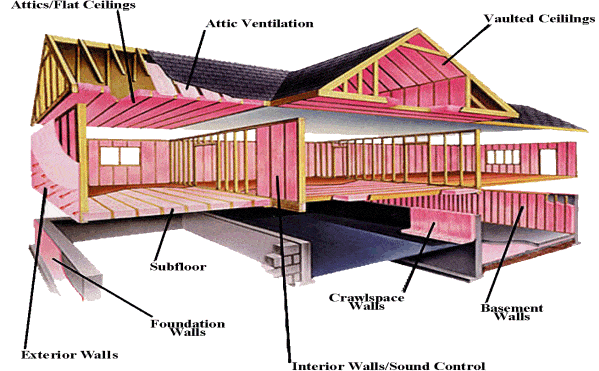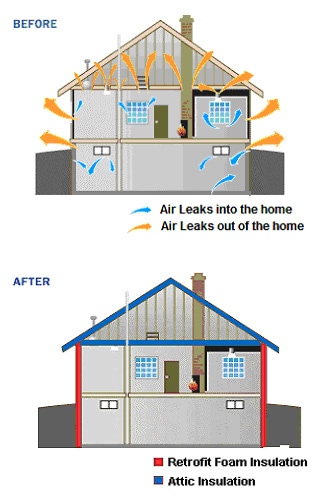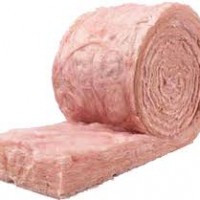With the storm season upon us and the winter months approaching, proper insulation is at its most important. Your home being well-insulated results in energy savings, and ultimately more money in your pocketbook. We will cover the 3 keys areas and 4 insulation materials for your home this coming winter.

Here are 3 keys areas to insulate your home:
- Attic– Ensuring your attic is amply insulated is one of the most cost-effective upgrades you can make to your system’s efficiency. Before insulating, confirm that all attic-to-home air leaks have been completely sealed. Attics are typically insulated using loose-fill or batt insulation. Loose-fill style insulating is slightly more effective than batt when properly installed.
- Ductwork – Insulating the ducts located in unconditioned spaces is vital to the efficiency of your system. The areas of your home which are usually unconditioned include garages, attics, and crawl spaces. The temperatures often found in these areas can register quite a bit higher or lower than that of the conditioned air passing through the ducts. This variance in temperature will negatively impact your conditioned air due to the conductive nature of duct material. For this reason, an incorrectly insulated duct can sacrifice up to 30 percent of the energy being used to heat or cool your home. The ideal insulating style for ducts is to use a rigid fiberboard.
- Foundation – The benefits associated with a properly insulated home foundation include lower heating costs, and the prevention of moisture issues and bug infestation, includes foundation walls, subfloor, crawlspace, and basement walls. If your home has any below-ground rooms, those will usually be much more comfortable as well, courtesy of a correctly insulated foundation. Tread carefully though, the cost of adding to or improving your home’s foundation insulation can be costly due to the invasive nature of the project.

What options do I have for insulation material?
- Fiberglass insulation: The pink stuff
- Foam insulation
- Cotton insulation
- Cellulose insulation
Fiberglass insulation: The pink stuff

The most common type of insulation, fiberglass is made with glass fibers that can break off and be inhaled, causing lung damage, especially to professional installers. Most of it contains phenol-formaldehyde, a substance the Environmental Protection Agency has pegged as a probable human carcinogen. Fortunately, manufacturers have developed ways to eliminate formaldehyde-used as a binder-and to create fiberglass insulation from 30 to 40 percent post-consumer recycled glass content.
Foam insulation
Spray foam insulation is an effective insulator with an R-value that ranges from about 3.2 to 7 per inch, the highest insulation rating for materials. It starts as a liquid that’s sprayed or poured into a wall cavity and then expands to fill every nook and cranny. Some foams can be blown only into new walls; others are appropriate for retrofitting. It must be installed by professionals.
Foam insulation stops air leaks and can be used where other insulations can’t, such as in foundations. However, the presence of polyurethane, a plastic, means spray foam insulation isn’t all-natural. Another problem has been that ozone-damaging chlorofluorocarbons (CFCs) were used historically as blowing and foaming agents.
Cementitious foam-a a non-flammable, extremely stable insulation-is made of magnesium oxide derived from seawater. When dry, it’s inert and should have no impact on chemically sensitive people.
Cotton insulation
Cotton insulation is made from remnants that denim manufacturers and other textile plants otherwise would have thrown away. It’s sold either as loose-fill or in batts, like fiberglass, but without chemical or respiratory irritants.
Like other textile products, cotton insulation is treated with boric acid as a fire retardant, pest repellent, and an anti-fungal agent. Unlike most pest repellents and, boric acid is fairly nontoxic, and provides additional levels of odor control.
Cellulose insulation
Cellulose insulation consists of 80 to 90 percent post-consumer recycled newsprint, cardboard, and paperboard. It’s sometimes applied by making it into a wet newspaper mush and spraying it into open wall cavities; sometimes it’s shredded dry and used in attics as loose-fill. Like cotton, cellulose insulation is often treated with boric acid.
Although cellulose insulation is earth-friendly and benign, some chemically sensitive people are bothered by outgassing from the newsprint ink. Because it’s made of wood fiber, cellulose can absorb more moisture than most other types of insulation. If the wall insulation gets wet often or is unable to dry out, the boric acid could leach out and mold could grow.






